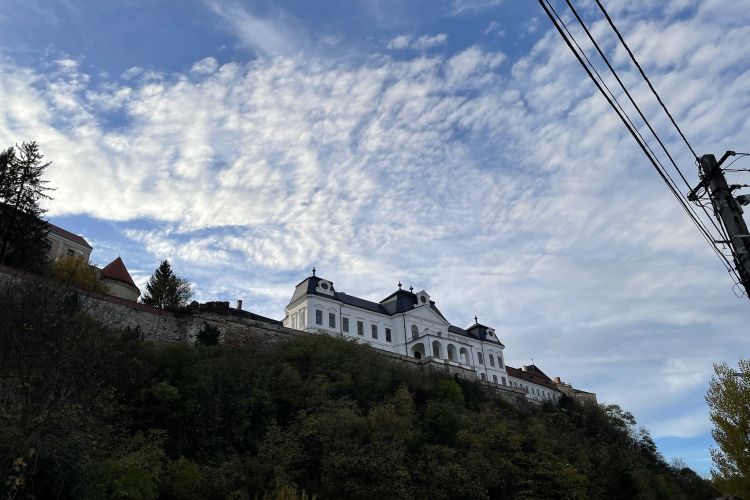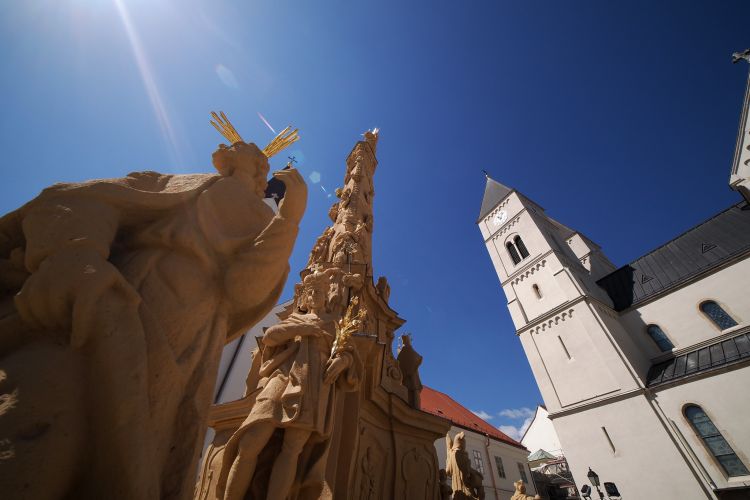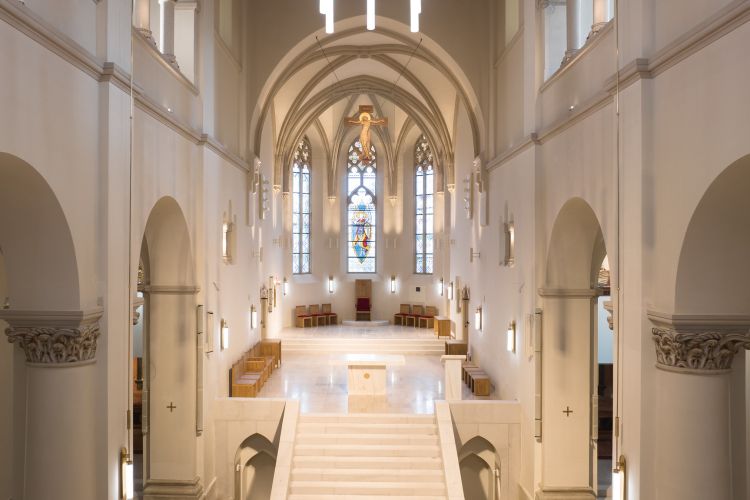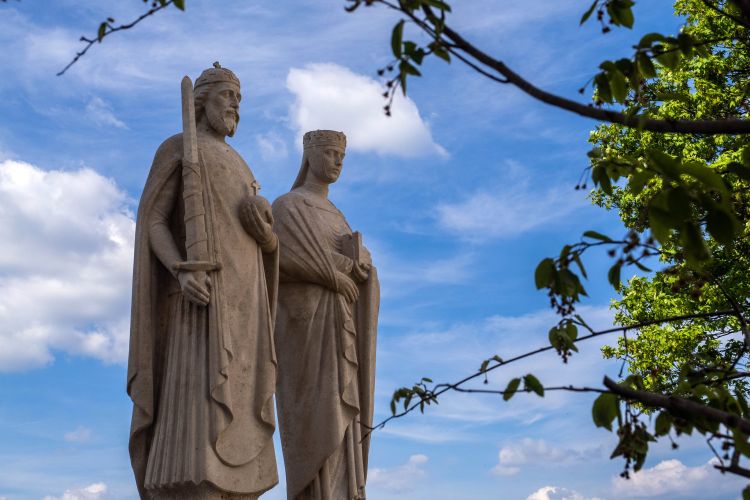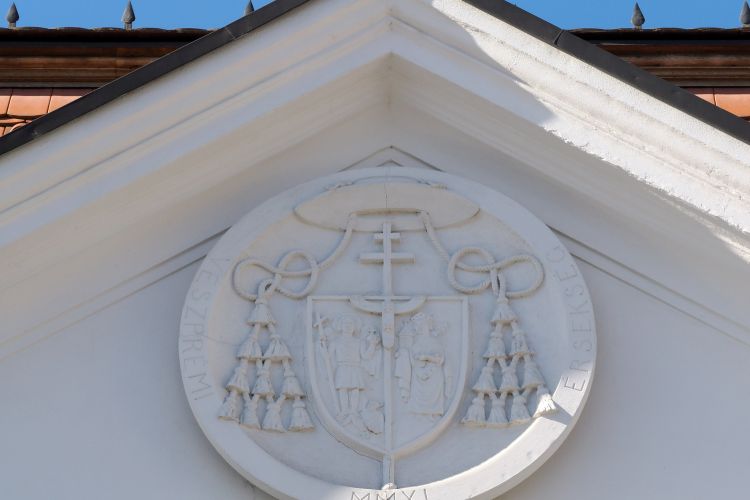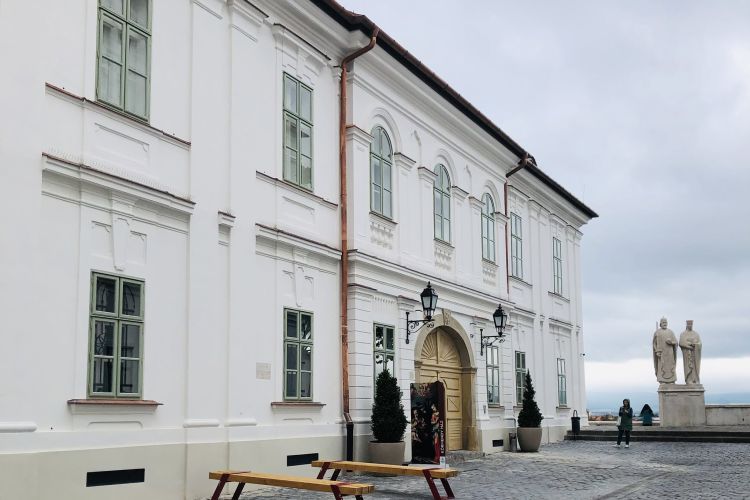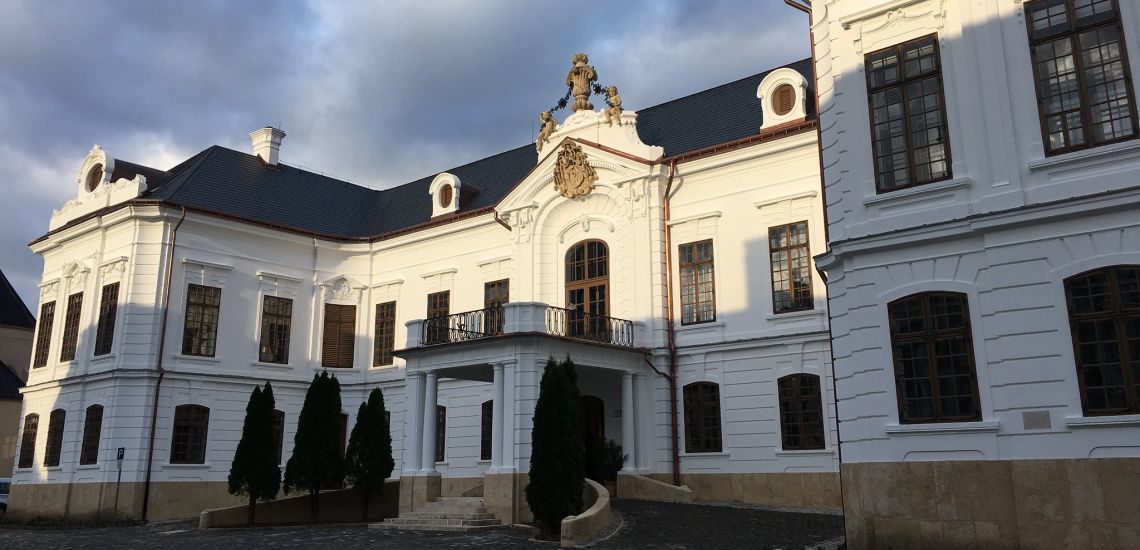
The Archbishop's Palace is one of the gems of Holy Trinity Square.
Already in the time of King St. Stephen, and probably even earlier, there were ecclesiastical and secular centres located side by side on the northern tip of the hill. The ecclesiastical buildings must have included an archbishop’s palace, but very little is known about its earliest forms.
The current Archbishop’s Palace is attributed to Bishop Ignác Koller (1762–1763), who commissioned Jakab Fellner to design the building in 1763. Frescoes by the world-famous master Johann Cymbal, dating from 1772, can be seen throughout the palace.
The interior is the result of centuries of collecting and purchasing. The building is also rich in 18th century art treasures such as paintings, engravings, sculptures and furniture. The palace’s collection includes the desk of Bishop Károly Hornig (1888-1917), a deer skin furniture set made during the visit of Franz Joseph, the furniture of Queen Elisabeth (Sissy) and gifts from Sissy, including the high priest’s vestments made from the scroll of her coronation robes.
The Archbishop's Palace is temporarily not visitable.
Already in the time of King St. Stephen, and probably even earlier, there were ecclesiastical and secular centres located side by side on the northern tip of the hill. The ecclesiastical buildings must have included an archbishop’s palace, but very little is known about its earliest forms. The earliest versions of the archbishop’s palace, formerly the bishop’s palace, are known to have burnt down several times and that (one of) the old bishop’s palaces was still standing in 1712. It was used as a granary during the Rákóczi War of Independence and was finally demolished in 1719. In 1733, Bishop Ádám Acsády (1725–1744) had a new bishop’s palace built next to the inner castle gate, but neither he nor his successor, Márton Padányi Biró, lived there.
The current Archbishop’s Palace is attributed to Bishop Ignác Koller (1762–1763), who commissioned Jakab Fellner to design the building in 1763. Construction began in 1765 and was completed in 1776 under the direction of master mason Vencel Hauensteiner. Fellner used a symmetrical layout for the U-shaped building, following the layout of 18th century Baroque castles. He had a nicely curved double driveway built to the main entrance to allow horse-drawn carriages to arrive and depart comfortably. He had the remains of the medieval palace demolished, but used the walls of Acsády bishop’s palace and moved the central, main part of the building to the edge of the castle hill. In the centre of the tympanum he placed the coat of arms of the Koller family of Nagymánya, above which is a sculptural group of angels holding a garland of flowers hanging down from two sides of the vase.
Inside the building, Fellner drew on the traditions of Baroque palace architecture to create a modern floor plan that provided for all functions. Upstairs, the spaces for privacy and representation were arranged in such a way as to allow the high priest to retreat and contemplate even when others were working in the offices downstairs or when guests were arriving. An important place of retreat, for example, is the bishop’s upstairs home chapel in the north wing, whose ceiling frescoes – depicting the Holy Trinity with the first human couple and the ancestors – were created by the world-famous master Johann Cymbal. His frescoes from 1772 can be seen throughout the palace.
The palace needed renovation as early as at the end of the 19th century, during which both the building structure and the frescoes were restored. Several conservation efforts were necessary in the 20th century and the building was renovated at the end of the century in 1996, for the 1100th anniversary of the Magyar Conquest, and subsequently in 2008.
In the autumn of 2021, archaeologists unearthed a valuable gold find in the basement of the Archbishop’s Palace. The 105-piece coin collection is made up of gold coins minted between 1812 and 1930, mainly in France and Switzerland.
The building’s designer, Jakab Fellner, was a self-taught, or unqualified architect who grew out of local architectural practice to become a respected and successful professional.
